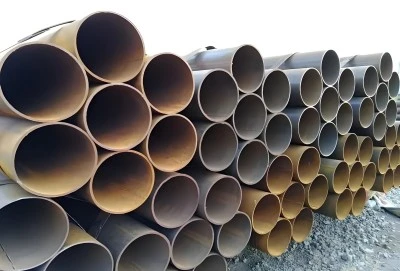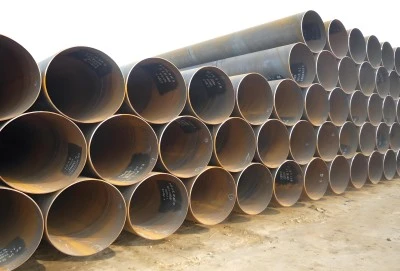Chemical Composition
When comparing A36 tubing and A500 tubing, one of the key differences lies in their chemical composition. Both types of steel share similarities in their overall makeup, but there are subtle yet significant variations that contribute to their distinct properties and applications.
A36 steel is a low carbon steel, known for its versatility and widespread use in various structural applications. Its carbon content typically ranges from 0.25% to 0.29%, with a maximum limit of 0.30%. This relatively low carbon content contributes to A36's excellent weldability and formability, making it a popular choice for many construction and manufacturing projects.
On the other hand, A500 steel, which is specifically designed for structural tubing, generally contains a slightly higher carbon content. The carbon content in A500 steel typically ranges from 0.20% to 0.26%. This subtle increase in carbon content plays a crucial role in enhancing the strength of A500 tubing compared to A36.
Besides carbon, both A36 and A500 steels contain other alloying elements such as manganese, silicon, phosphorus, and sulfur. The proportions of these elements are carefully controlled to achieve the desired mechanical properties. For instance, manganese in both steels helps improve strength and hardenability, while silicon aids in deoxidation during the steelmaking process.
It's worth noting that while the chemical composition differences between A36 and A500 may seem minor, they significantly influence the mechanical properties and performance characteristics of these materials in various applications.
|
|
|
Mechanical Properties
The mechanical properties of A36 and A500 tubing show notable differences, primarily due to their distinct chemical compositions and manufacturing processes. These differences make each type of steel suitable for specific applications within the construction and engineering industries.
A36 steel is characterized by its minimum yield strength of 36,000 psi (250 MPa), which gives the material its name. Its tensile strength typically ranges from 58,000 to 80,000 psi (400-550 MPa). These properties make A36 steel a reliable choice for many structural applications where moderate strength is required.
In contrast, A500 tubing boasts higher strength values. The yield strength of A500 steel is a minimum of 42,000 psi (290 MPa) for Grade B, which is the most commonly used grade. Its tensile strength is also higher, with a minimum of 58,000 psi (400 MPa) for Grade B. These enhanced strength properties make A500 tubing more suitable for applications that demand greater load-bearing capacity and resistance to deformation.
The elongation properties of these steels also differ. A36 steel typically has an elongation of 20% in 8 inches, indicating good ductility. A500 steel, depending on the grade and shape, may have slightly lower elongation values, but still maintains sufficient ductility for most structural applications.
It's important to note that A500 tubing is available in different grades (A, B, C, and D), each with progressively higher strength properties. This allows engineers and designers to select the most appropriate grade based on the specific requirements of their projects.
Uses
The distinct properties of A36 and A500 steel lead to their use in different applications across various industries. Understanding these applications helps in choosing the right material for specific projects.
A36 steel, known for its good weldability and machinability, finds extensive use in general structural applications. It's commonly employed in the construction of buildings, bridges, and towers. The material's versatility makes it suitable for components such as beams, columns, plates, and angles in these structures. Additionally, A36 steel is widely used in the manufacturing of mechanical parts, equipment frames, and various fabricated items.
In the automotive industry, A36 steel is often used for chassis components and other non-critical structural parts. Its ease of fabrication and good formability make it an economical choice for many applications where extreme strength is not the primary requirement.
A500 tubing, with its higher strength properties, is typically chosen for applications that demand greater structural integrity and load-bearing capacity. It's predominantly used in the construction industry for columns, beams, and other critical load-bearing components in buildings and large structures. The superior strength of A500 tubing allows for the design of more efficient structures with potentially lighter weight and smaller cross-sections compared to A36 steel.
In addition to building construction, A500 tubing finds applications in the manufacture of agricultural equipment, heavy machinery frames, and support structures for industrial facilities. Its combination of strength and formability makes it an excellent choice for these demanding applications.
Manufacturing Process
The manufacturing processes for A36 steel and A500 tubing differ, contributing to their unique properties and typical forms of availability. A36 steel is produced through various methods, offering flexibility in its final form. It can be hot-rolled or cold-rolled, depending on the desired properties and intended application. Hot rolling is typically used for larger structural shapes and plates, while cold rolling is employed for producing sheets and some bar forms with tighter tolerances and improved surface finish.
The versatility of the A36 manufacturing process results in a wide range of available shapes and sizes. These include rectangular bars, round bars, pipes, angles, channels, and plates. This variety allows A36 to be used in numerous applications across different industries. A500 tubing, on the other hand, is specifically manufactured as structural tubing. It's typically produced through a cold-forming process, which involves rolling flat steel strips into a tubular shape and welding the seam. This process results in tubing with precise dimensions and good surface finish.
A500 tubing is also available in seamless form, which is produced by extruding a solid billet of steel into a hollow tube. Seamless A500 tubing is often preferred for applications requiring higher pressure resistance or where weld integrity is a critical factor. The cold-forming process used in A500 tubing production contributes to its higher strength compared to A36 steel. Cold working increases the strength of the material through strain hardening, resulting in the superior mechanical properties of A500 tubing.
A500 Steel Tube Manufacturer
LONGMA GROUP is a prominent manufacturer of A500 steel tubing, offering products that meet industry standards and cater to various structural applications. Their A500 steel tubes are available in three grades: A, B, and C. Each grade offers progressively higher strength properties, allowing customers to select the most appropriate option for their specific project requirements.
Grade A is the standard grade, suitable for general structural applications. Grade B, which is the most commonly used, offers higher strength and is often chosen for more demanding structural roles. Grade C provides the highest strength among the three, making it ideal for applications where maximum load-bearing capacity is crucial.
For those in need of high-quality A500 steel tubing and seeking a reliable manufacturer, LONGMA GROUP is ready to assist you. With a commitment to excellence, they provide a range of A500 steel tubes suitable for diverse construction and engineering projects. Their knowledgeable team is dedicated to ensuring you find the right products for your specific requirements. Interested parties can easily reach out at info@longma-group.com for detailed information about their offerings, technical specifications, and expert guidance to help you make informed decisions that contribute to the success of your projects.














